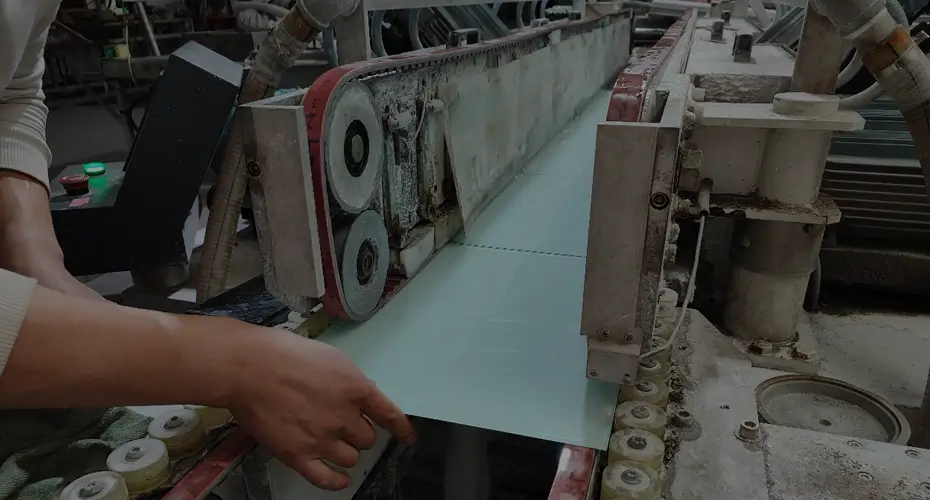10 月 . 10, 2024 14:54 Back to list
laminated glass and tempered glass
Laminated Glass vs. Tempered Glass A Comprehensive Comparison
When it comes to modern architecture and interior design, glass plays a pivotal role, both aesthetically and functionally. Among the various types of glass available, laminated glass and tempered glass are two popular options, each with unique properties and applications. Understanding their differences, advantages, and disadvantages can help architects, builders, and consumers make informed decisions regarding their use.
What is Laminated Glass?
Laminated glass is a type of safety glass that consists of two or more layers of glass bonded together by an interlayer, often made of polyvinyl butyral (PVB) or ethylene-vinyl acetate (EVA). This interlayer is crucial because it holds the layers of glass together even when shattered, preventing dangerous shards from scattering. Laminated glass is commonly used in areas where safety is a priority, such as in car windshields, skylights, and glass facades.
One of the most significant advantages of laminated glass is its enhanced safety features. In the event of breakage, the interlayer keeps the glass intact, reducing the risk of injuries from sharp shards. Additionally, laminated glass offers superior sound insulation, making it an excellent choice for buildings in noisy environments. It also provides UV protection, blocking up to 99% of harmful UV rays, thus protecting interior furnishings and flooring from fading.
What is Tempered Glass?
Tempered glass, also known as toughened glass, undergoes a specific thermal treatment that increases its strength compared to ordinary (annealed) glass. The glass is heated to high temperatures and then rapidly cooled, creating internal stresses that make it more resistant to impacts and temperature fluctuations. When broken, tempered glass shatters into small, blunt pieces rather than sharp shards, significantly reducing the risk of injury.
Tempered glass is widely used in applications where safety and strength are essential, such as in shower doors, glass railings, and glass doors and windows. Its ability to withstand high temperatures and thermal stress makes it suitable for use in high-heat environments, including fireplaces and stovetops.
laminated glass and tempered glass

Comparing the Two
When comparing laminated glass and tempered glass, one of the primary considerations is safety. Both types provide a level of safety; laminated glass excels in preventing shard dispersion, while tempered glass minimizes injury due to its breakage pattern. However, laminated glass is often preferred in applications where security and sound insulation are more critical.
In terms of performance, laminated glass offers better sound attenuation and UV protection, making it a favorite for residential and commercial buildings located in urban areas or near highways. Conversely, tempered glass has superior thermal resistance, making it suitable for environments with extreme temperature fluctuations.
Cost is also a consideration when selecting between the two. Generally, laminated glass tends to be more expensive due to the additional materials and manufacturing processes involved in creating the interlayer. However, the added benefits may justify the cost in particular applications.
Applications and Usage
Both laminated glass and tempered glass have distinct applications that cater to their unique properties. Laminated glass is often utilized in skylights, sunroofs, and safety barriers, where noise reduction and security are priorities. In contrast, tempered glass is ideal for glass doors, windows, and facades, where strength and resistance to thermal stress are essential.
Conclusion
Ultimately, the choice between laminated glass and tempered glass depends on the specific requirements of a project, including safety, performance, and budgetary constraints. By understanding the characteristics and benefits of each type of glass, architects, builders, and consumers can make informed decisions that enhance the safety, efficiency, and aesthetic appeal of their designs. Whether opting for the resilience of tempered glass or the safety features of laminated glass, the right choice can significantly impact the overall success of a construction or renovation project.
-
Wired Glass: A Strong and Secure Glass Solution for Various Applications
NewsNov.04,2024
-
Tinted Glass: A Stylish and Functional Choice for Modern Homes
NewsNov.04,2024
-
The Elegance and Versatility of Silver Mirrors
NewsNov.04,2024
-
The Advantages of Copper Free Mirrors
NewsNov.04,2024
-
Tempered Glass: A Reliable Choice for Modern Applications
NewsNov.04,2024
-
Pattern Glass: Stylish and Functional Glass for Modern Design
NewsNov.04,2024
Related PRODUCTS














